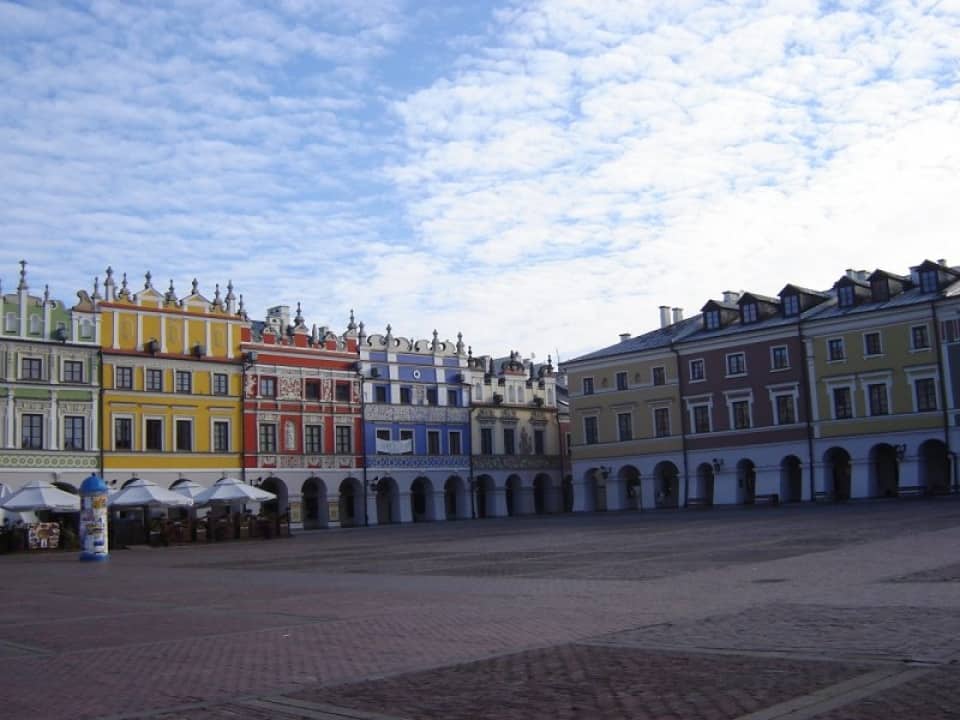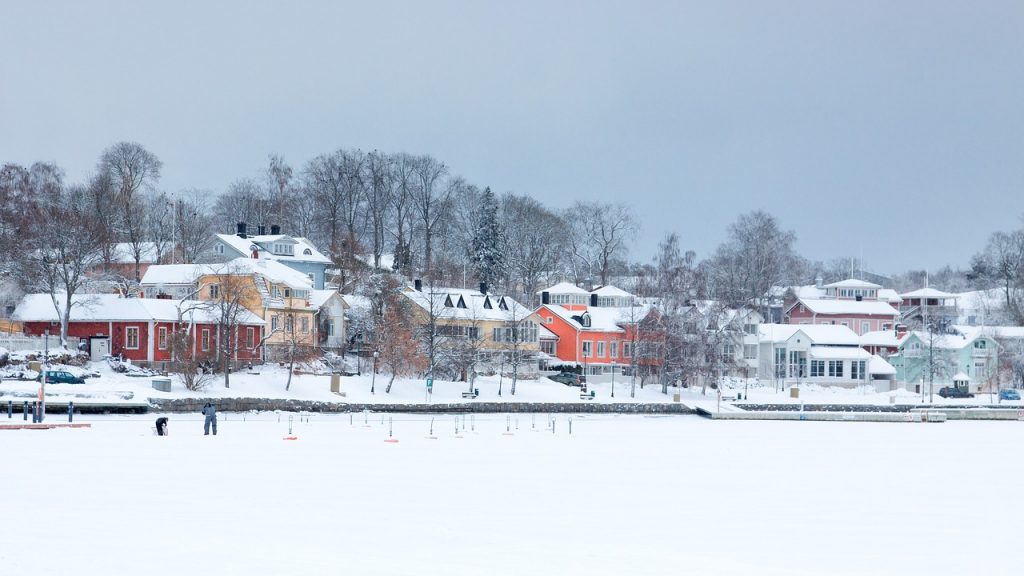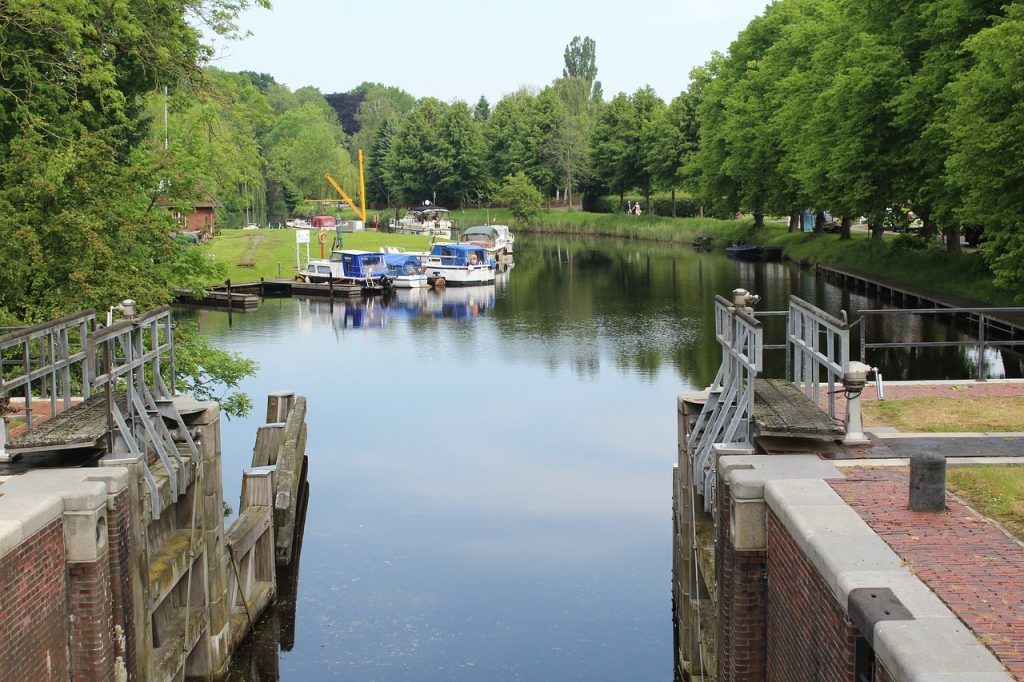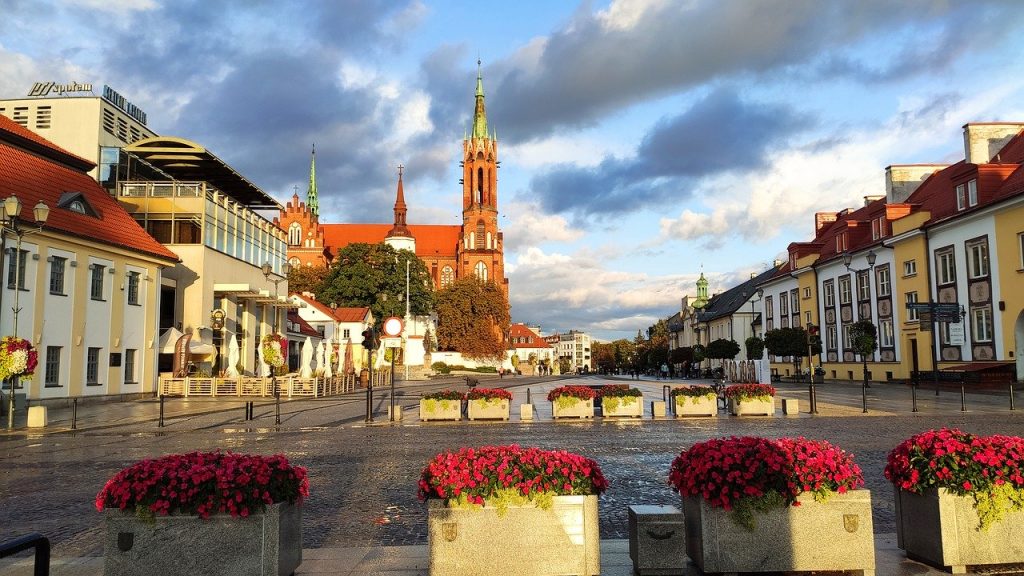Zamość is a city designed for the order of Jan Zamoyski. This city is an outstanding achievement of the Renaissance. Many monuments have survived to this day.
The city fortress, founded in 1580 by Jan Zamoyski, Grand Chancellor of the Crown, designed by Italian architect Bernardo Mornado, constituting an outstanding achievement of late Renaissance European urban thought. The urban layout of the downtown with a complex of about 120 architectural monuments was included in the monuments of the highest artistic and historical value in the world. Declared a historical monument, it was inscribed on the UNESCO World Heritage List in 1992. Zamość is a hero city, awarded in 1947 with the Grunwald Cross of the Third Class for outstanding contributions to the fight for national and social liberation, and for the fight against the Nazi occupier.

Zamość is a city of great historical traditions in many fields: in the field of science, education and culture. Many prominent people were associated with the city: statesmen – Chancellor and Hetman Jan Zamoyski, Chancellor Andrzej Zamoyski, commanders and military specialists – Eng. Andrea dell’Aqua, general J.Ch. Mallet-Malletski, fighters for national independence – W. Łukasiński, political activists – M. Rataj. Famous writers and poets – S. Klonowicz, Sz. Szymonowicz, K. Koźmian, S. Młodożeniec, B. Leśmian. Zamość was also a stage of pilgrimage of the Holy Father John Paul II in the homeland (12.06.1999).
Zamość is trying to make the most of its past. The castle founded by Jan Zamoyski has retained much of its splendor. In spring and summer, the Zamość monuments, especially the Grand Market, become the scenery for cultural, sporting and commercial events taking place here to increase the city’s attractiveness. History connects with the present and gives shape to the future.
Zamość is the only one of the few cities that has well-preserved foundations of defensive walls. In Bastion VII you can take a walk along the tourist route and see the walls from the inside with shooting holes. Attractive feast meetings are held in the two existing casemates at the request of those interested. Until 2013, renovation and conservation works will be carried out.

Zamość – as a starting point for Roztocze
Roztocze is located in south-eastern Poland, in the Lublin and partly Podkarpackie voivodships. It is a range of low hills stretching from Kraśnik to Lviv in Ukraine, about 180 km long and 15-25 km wide. The majority of about 110 km is in Poland, the rest is on the Ukrainian side. Due to the geological structure, Roztocze is divided into: loess Roztocze West, calcareous-sand Roztocze Środkowy and limestone Roztocze Wschodnie, located mostly in Ukraine. The highest hills in individual parts of Roztocze are: Dąbrowa, 344 m above sea level. (West), Wapielnia, 386 m above sea level (Middle) and the so-called High Castle 409 m a.s.l. in Lviv in the East Roztocze. A characteristic element of the Roztocze landscape are forests.
The Roztocze area is also a water department. The waters of most rivers and streams end up in the Baltic Sea drainage basin, but some from the Ukrainian side enter the Black Sea. Perfect natural conditions favor the creation of various legal forms of nature protection. On the Polish side, it is the Roztoczański National Park, the Szczebrzeszyn Landscape Park, the Krasnobród Landscape Park, the South Roztocze Landscape Park, and the Solska Forest Landscape Park. In addition, other forms of nature protection are nature reserves and monuments. On the Ukrainian side of Roztocze, nature is protected in the Jaworowski National Park (7078 ha), the “Roztocze” State Reserve and the Rawski Landscape Park. In order to comprehensively protect nature, it is planned to create the “Roztocze” International Biosphere Reserve.
Each year, Roztocze is visited by a total of about 500,000 tourists. The main tourist centers are Lviv and Zhovkva on the Ukrainian side and Zwierzyniec, Krasnobród, Susiec and Horyniec Zdrój on Polish. An important center is also the city of Zamość, although it lies about 10 km outside the geographical borders of Roztocze, but integrally associated with it. The historical, cultural and natural wealth of Roztocze creates the opportunity to organize arrivals of tourist groups interested in various aspects of life. Clean air, numerous monuments and well-developed tourist facilities make it a paradise for people who want to relax away from the hustle and bustle of big cities.
The article comes from the portal: http://www.turystyka-pojezierze.pl/


